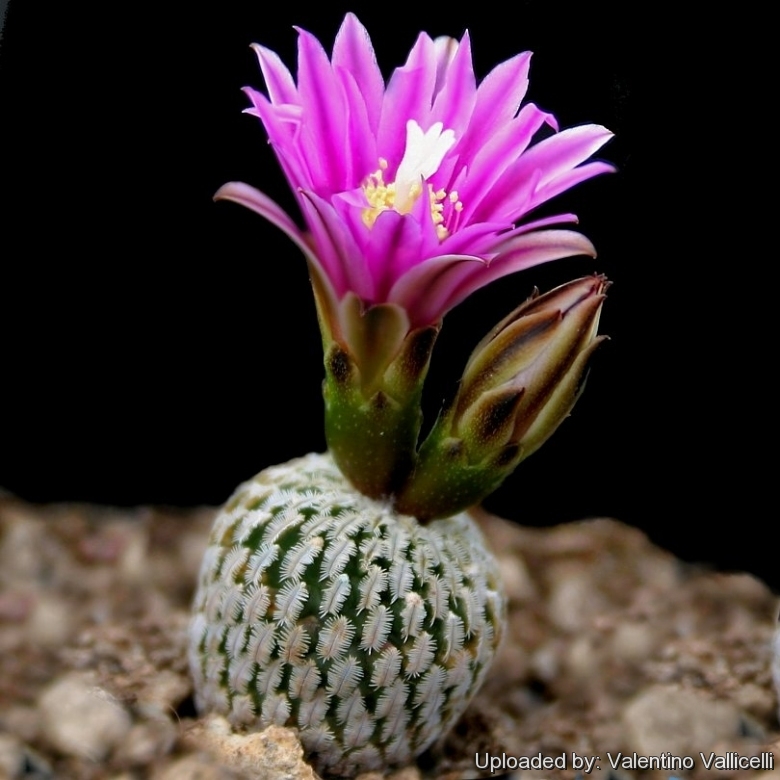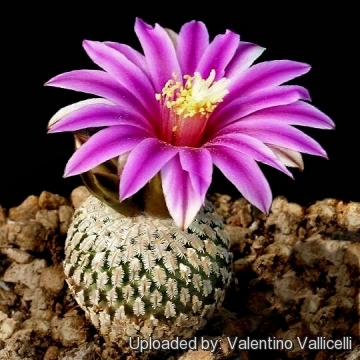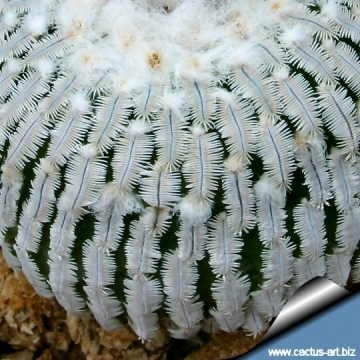Donate now to support the LLIFLE projects.
Your support is critical to our success.
Your support is critical to our success.
Turbinicarpus pseudopectinatus var. jarmilae
Gen. Turbinicarpus 42. 2004 [Mar 2004]
Family: CACTACEAE
Gen. Turbinicarpus 42. 2004 [Mar 2004]
Family: CACTACEAE
= Turbinicarpus pseudopectinatus subs. jarmilae Halda & Chvastek, Chvastek
Acta Mus. Richnov., Sect. Nat. 7(1): 39 (2000).
Accepted Scientific Name: Turbinicarpus pseudopectinatus (Backeb.) Glass & R.A.Foster
Cact. Succ. J. (Los Angeles) 49: 175. 1977

Turbinicarpus pseudopectinatus var. jarmilae (Turbinicarpus pseudopectinatus subs. jarmilae) Photo by: Valentino Vallicelli
Synonyms:
- Turbinicarpus pseudopectinatus subs. jarmilae Halda & Chvastek, Chvastek
- Pelecyphora pulcherrima Sabatini
- Turbinicarpus pseudopectinatus var. jarmilae (Halda & Chvastek) M.Zachar
See all synonyms of Turbinicarpus pseudopectinatus
back
Accepted name in llifle Database:Turbinicarpus pseudopectinatus (Backeb.) Glass & R.A.Foster
Cact. Succ. J. (Los Angeles) 49: 175. 1977
Synonymy: 16
- Turbinicarpus pseudopectinatus (Backeb.) Glass & R.A.Foster
- Mammillaria pseudopectinata (Backeb.) H.P.Kelsey & Dayton
- Neolloydia pseudopectinata (Backeb.) E.F.Anderson
- Normanbokea pseudopectinata (Backeb.) Kladiwa & Buxb. in Krainz
- Pediocactus pseudopectinatus (Backeb.) Halda
- Pelecyphora pseudopectinata Backeb.
- Turbinicarpus pseudopectinatus f. aurata hort.
- Turbinicarpus pseudopectinatus f. cristatus hort.
- Turbinicarpus pseudopectinatus f. inermis cristatus hort.
- Turbinicarpus pseudopectinatus f. inermis hort.
- Turbinicarpus pseudopectinatus subs. jarmilae Halda & Chvastek, Chvastek
- Pelecyphora pulcherrima Sabatini
- Turbinicarpus pseudopectinatus var. jarmilae (Halda & Chvastek) M.Zachar
- Turbinicarpus pseudopectinatus f. rubriflorus (A.T.Powell) hort.
- Neolloydia pseudopectinata var. rubriflora A.T.Powell
- Turbinicarpus pseudopectinatus f. variegatus hort.
back

Turbinicarpus pseudopectinatus var. jarmilae (Turbinicarpus pseudopectinatus subs. jarmilae) Photo by: Valentino Vallicelli

Turbinicarpus pseudopectinatus var. jarmilae (Turbinicarpus pseudopectinatus subs. jarmilae) Photo by: Cactus Art
| Your Actions | |
|---|---|
| Back to Turbinicarpus index | |
| Back to Cactaceae index | |
 |
Back to Cacti Encyclopedia index |








